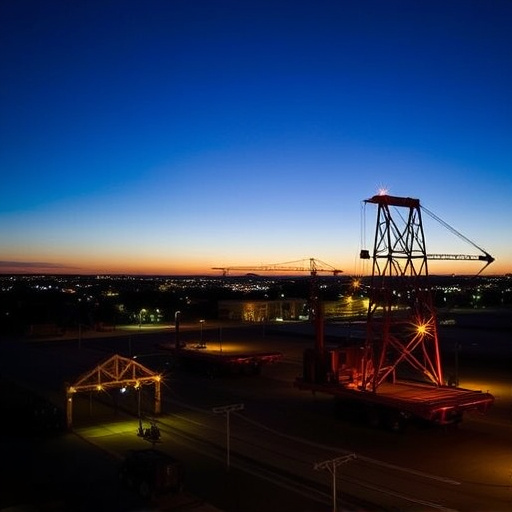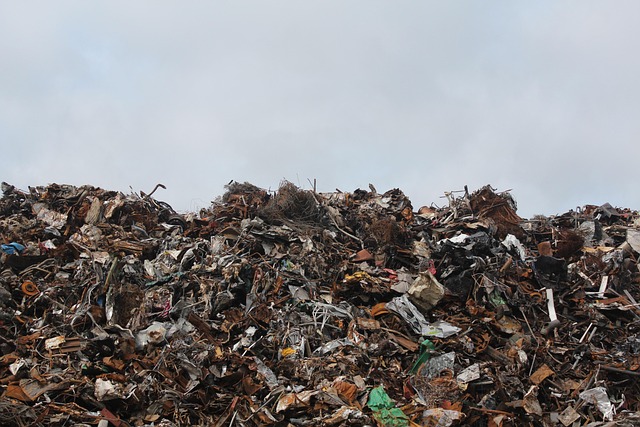Steeline Bendigo: A Comprehensive Exploration
Introduction
Welcome to an in-depth exploration of Steeline Bendigo, a concept that has captivated industries worldwide with its innovative approach to urban development and sustainability. This article aims to unravel the complexities of Steeline Bendigo, offering readers a comprehensive understanding of its origins, applications, global reach, and future potential. By delving into its various facets, we will uncover how this unique model is reshaping cities and driving progress.
Understanding Steeline Bendigo: Unveiling the Core
Definition: Steeline Bendigo, in its essence, represents a holistic urban development framework that integrates sustainable design, smart technology, and community engagement to create vibrant, resilient cities. It is a comprehensive strategy aimed at enhancing the quality of life for residents while promoting environmental stewardship.
Key Components:
-
Sustainable Design: At the heart of Steeline Bendigo lies a commitment to eco-friendly architecture and urban planning. This involves energy-efficient buildings, green spaces, renewable energy sources, and waste management systems designed to minimize environmental impact.
-
Smart Technology Integration: The concept leverages advanced technologies to create ‘smart’ cities. This includes intelligent transportation systems, digital infrastructure, data analytics for urban management, and the Internet of Things (IoT) to improve efficiency and citizen services.
-
Community Engagement: Steeline Bendigo emphasizes community participation in decision-making processes. It encourages collaboration between residents, local businesses, and government bodies to ensure development aligns with the needs and aspirations of the community.
Historical Context: The term ‘Steeline’ is derived from the fusion of “sustainable” and “lineage,” reflecting its roots in the growing global movement towards eco-conscious urban development. Bendigo, a city in Victoria, Australia, serves as the conceptual birthplace, where early pilots projects laid the groundwork for what has since evolved into a global phenomenon.
Global Impact and Trends
Steeline Bendigo’s influence extends far beyond Bendigo’s borders, inspiring cities worldwide to embrace sustainable and tech-driven transformation. Here’s an overview:
| Region |
Impact and Initiatives |
| Europe |
European cities like Amsterdam and Copenhagen have adopted elements of Steeline Bendigo, focusing on cycling infrastructure and smart city solutions. The EU’s Horizon 2020 program funded numerous projects centered around sustainable urban mobility. |
| North America |
Cities such as Seattle and Toronto have implemented green building standards and smart grid technologies inspired by Steeline principles. The U.S. Department of Energy’s ‘Smart City Challenge’ encourages cities to embrace innovative solutions for energy efficiency. |
| Asia Pacific |
Singapore and Tokyo are leading the way in smart city development, integrating AI and IoT into urban infrastructure. Australia’s own ‘Green Cities Fund’ supports projects aligned with Steeline Bendigo’s sustainable design goals. |
| Africa |
Cape Town, South Africa, has gained recognition for its water conservation efforts, utilizing Steeline strategies to manage water resources during droughts. The African Union’s ‘Urbanization and Health’ initiative promotes sustainable urban development across the continent. |
Economic Considerations: Market Dynamics and Opportunities
The economic implications of Steeline Bendigo are multifaceted, impacting various sectors:
-
Construction and Real Estate: This sector experiences a shift towards sustainable building practices, driving innovation in eco-friendly materials and design. Green buildings command premium prices, attracting investors and developers.
-
Technology Industries: The integration of smart technologies creates new business opportunities. Startups focused on IoT, data analytics, and digital infrastructure thrive as cities seek to modernize their systems.
-
Tourism: Steeline Bendigo projects often enhance a city’s appeal, attracting tourists interested in sustainable and tech-forward destinations. Eco-tourism and smart city experiences contribute to local economies.
-
Government Spending: Governments allocate funds for infrastructure upgrades, with a focus on sustainability and digital transformation. This stimulates the economy and creates demand for related services and products.
Technological Advancements Shaping Steeline Bendigo
Technology plays a pivotal role in the realization of Steeline Bendigo’s vision:
-
Smart Buildings: Advanced sensors and automation enable buildings to adjust lighting, temperature, and ventilation based on occupancy and weather conditions, optimizing energy usage.
-
Transportation Systems: Autonomous vehicles, electric bus networks, and bike-sharing programs reduce traffic congestion and carbon emissions, improving mobility.
-
Data Analytics: Cities use data to optimize waste management, energy distribution, and transportation networks, leading to more efficient resource allocation.
-
Digital Infrastructure: High-speed internet connectivity and 5G networks enable the flow of data between devices and systems, supporting smart city applications.
Policy and Regulation: Guiding the Steeline Journey
Governments play a crucial role in facilitating Steeline Bendigo’s implementation through policy frameworks:
-
Environmental Regulations: Stricter building codes and emissions standards drive sustainable practices, ensuring new developments meet eco-friendly criteria.
-
Smart City Policies: Many cities have established dedicated departments or councils to oversee smart city initiatives, fostering collaboration between public and private sectors.
-
Community Engagement Laws: These ensure that residents’ voices are heard in urban planning processes, promoting transparency and community buy-in.
-
Data Privacy Frameworks: As Steeline Bendigo relies heavily on data collection, robust privacy laws protect citizen data while encouraging the responsible use of information.
Challenges and Criticisms: Overcoming Barriers
Despite its potential, Steeline Bendigo faces challenges that require careful consideration and strategic solutions:
-
Initial Investment Costs: Implementing sustainable and smart technologies can be expensive, deterring some cities from adopting these practices. However, long-term savings in energy and infrastructure costs outweigh initial investments.
-
Digital Divide: Ensuring equal access to digital services and technology is essential. Efforts must be made to bridge the gap between tech-savvy citizens and those who lack digital literacy or access.
-
Community Resistance: Some residents may resist changes to established urban landscapes or argue that sustainable practices could harm local businesses. Effective communication and engagement strategies can help address these concerns.
Proposed Solutions:
- Public-Private Partnerships: Collaborating with private sector entities can share costs and risks, making Steeline initiatives more feasible.
- Phased Implementation: Cities can gradually adopt Steeline elements, allowing time for adaptation and ensuring a smoother transition.
- Community Engagement Programs: Active participation in decision-making processes can foster a sense of ownership and increase support for sustainable changes.
Case Studies: Successful Steeline Bendigo Applications
1. Copenhagen, Denmark – Cycling Paradise
Copenhagen has transformed itself into a cycling capital, with an extensive network of bike lanes and shared mobility solutions. The city’s commitment to sustainability and active transportation aligns perfectly with Steeline Bendigo principles. As a result, Copenhagen boasts high levels of citizen satisfaction, reduced traffic congestion, and improved air quality.
2. Toronto, Canada – Green Building Revolution
Toronto has embraced the ‘Green Building By-law,’ setting strict standards for energy efficiency in new constructions. This initiative, combined with incentives for retrofits, has led to a surge in eco-friendly buildings. The city’s commitment to sustainable design has attracted green-focused businesses and contributed to its reputation as an eco-conscious urban center.
3. Sydney, Australia – Smart Water Management
Sydney’s water crisis prompted the implementation of innovative smart water systems. Sensors and data analytics monitor water usage in real-time, enabling efficient distribution and leak detection. This Steeline strategy has significantly reduced water wastage, ensuring a more sustainable future for the city.
Future Prospects: Emerging Trends and Growth Areas
The future of Steeline Bendigo is brimming with potential, driven by emerging technologies and evolving global priorities:
-
Green Hydrogen Integration: As renewable energy sources gain prominence, green hydrogen production and utilization will become critical. Steeline cities can lead in developing infrastructure for hydrogen fueling stations and energy storage.
-
Waste-to-Energy Systems: Advancements in waste management technology allow cities to harness energy from waste, reducing environmental impact and creating new revenue streams.
-
Digital Twin Cities: The concept of Digital Twins, virtual replicas of physical cities, will enhance urban planning and decision-making. These digital models can simulate various scenarios, optimizing resource allocation.
-
Resilient Urban Design: With climate change concerns on the rise, Steeline cities will prioritize resilient infrastructure to withstand extreme weather events. This includes flood-resistant buildings and adaptable public spaces.
Conclusion: A Transformative Journey
Steeline Bendigo represents a holistic approach to urban development, seamlessly integrating sustainability, technology, and community engagement. As cities worldwide grapple with environmental challenges and seek modern solutions, this concept offers a compelling roadmap for progress. By addressing economic, social, and technological aspects, Steeline Bendigo has the potential to create thriving, resilient communities while safeguarding our planet’s future.
FAQ Section: Answering Common Queries
Q: How does Steeline Bendigo differ from traditional urban development?
A: Steeline Bendigo goes beyond conventional development by prioritizing sustainability and smart technology integration from the outset. It encourages a holistic view of cities, considering environmental, social, and economic factors simultaneously.
Q: Can Steeline initiatives be affordably implemented in smaller towns?
A: Absolutely! Steeline principles can be scaled to suit communities of all sizes. Smaller towns can start with targeted projects like energy-efficient building retrofits or smart street lighting systems, gradually expanding their Steeline initiatives as resources allow.
Q: What role does community engagement play in the success of Steeline Bendigo?
A: Community buy-in is essential for successful implementation. When residents are involved in decision-making, they feel a sense of ownership, leading to increased support and participation in Steeline initiatives. This collaboration ensures that developments align with the community’s needs and aspirations.
Q: How does Steeline Bendigo address the digital divide?
A: Digital literacy programs and public access to technology can help bridge the gap. Cities should invest in training and resources to ensure all citizens can benefit from smart city technologies, fostering an inclusive digital environment.
Steeline Roofing Centre Bendigo is a one-stop roofing solution, offering high-quality products, expert advice, and efficient service for both residential and commercial properties. Conveniently located in the city centre with easy access by car…….
Continue Reading
Steeline Bendigo is a premier roofing solutions provider, offering a vast array of high-quality steel roofing materials for both residential and commercial projects. Their expertise and diverse product range cater to various architectural styles…….
Continue Reading
Steeline Bendigo is a leading roofing provider offering high-quality solutions for residential and commercial projects in and around Bendigo. With an extensive portfolio featuring durable steel sheets and innovative cooling systems, they cater t…….
Continue Reading
Steeline Bendigo is a leading roofing provider offering expert services to residential and commercial clients, focusing on quality, reliability, and local climate considerations. They use premium materials and advanced techniques for all project…….
Continue Reading
Steeline Bendigo, centrally located on [Street Name], is a comprehensive roofing supply centre catering to both commercial and residential needs. It offers a diverse range of high-quality, durable steel sheets, accessories, and products for new…….
Continue Reading
Steeleline Roofing Centre Bendigo (6 Harrien Ct, Epsom VIC 3551) is a premier building products supplier offering high-quality steel roofing, cladding, and structural components for residential and commercial projects. Their knowledgeable staff…….
Continue Reading
Steeline Bendigo, located at 6 Harrien Ct, Epsom VIC 3551, Australia, is a central hub offering convenient access, expert advice, and top-tier customer service for all roofing needs. With easy parking, a well-organized showroom, and knowledgeabl…….
Continue Reading
Steelee Roofing Centre Bendigo, located at 6 Harrien Ct, Epsom VIC 3551, Australia, is a leading provider of roofing solutions catering to both residential and commercial projects. They offer an extensive range of high-quality roofing products s…….
Continue Reading
Steeline Roofing Centre Bendigo, strategically located at 6 Harrien Ct, Epsom VIC 3551, Australia, offers easy accessibility via car, public transport, and digital mapping tools. They provide tours, expert advice, and state-of-the-art roofing ma…….
Continue Reading
Steeline roofing centre in Bendigo, Australia, offers a comprehensive range of high-quality steel roofing solutions for both residential and commercial projects. Their products are renowned for durability, leak prevention, and aesthetic appeal,…….
Continue Reading
Steeline Bendigo is Victoria's leading roofing provider, offering tailored solutions and top-notch services from their Epsom location. With years of experience and a focus on quality, they cater to both residential and commercial clients, p…….
Continue Reading
Steeline Bendigo, located at 6 Harrien Ct, Epsom VIC 3551, Australia, is a premier roofing destination offering high-quality solutions for residential and commercial properties. Their expert team provides cutting-edge design and durable material…….
Continue Reading
Steeline Roofing Centre Bendigo is a trusted partner for all roofing needs, providing high-quality solutions for both residential and commercial projects. With a diverse range of leading brands, expert advice, and exceptional customer service, t…….
Continue Reading
Steeline Roofing Centre Bendigo, located at 6 Harrien Ct, Epsom VIC 3551, Australia, offers convenient access in a vibrant community. With easy car or public transport routes and nearby amenities, it's easily navigable. Contact them directl…….
Continue Reading
Steeline Bendigo is a leading provider of roofing solutions in Epsom, Victoria. They offer expert advice, comprehensive services, and tailored solutions for all property needs, from repairs to installations. Accessible at 6 Harrien Ct, Epsom VIC…….
Continue Reading
Steeline Bendigo is a leading roofing solutions provider, offering high-quality products and expert advice for both residential and commercial applications. Strategically located at 6 Harrien Ct, Epsom VIC 3551, Australia, they serve the local c…….
Continue Reading
Steeline Bendigo, located at 6 Harrien Ct, Epsom VIC 3551, Australia, is a top provider of fast and dependable material pickup services for businesses and DIY enthusiasts. Their modern design and sustainable practices have revolutionized the loc…….
Continue Reading
Steeline Bendigo, located at 6 Harrien Ct, Epsom VIC 3551, Australia, is a comprehensive roofing materials hub offering durable steel roofing, high-quality flashing, and innovative solar panels for residential and commercial clients. As a leadin…….
Continue Reading

















